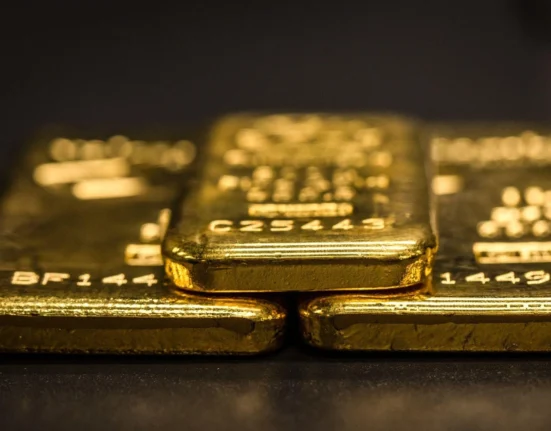Once reserved for trousseaus and temple offerings, gold is getting a slick, modern makeover in the hands of young Indian expats in the UAE. No longer just their grandmother’s prized possession, the yellow metal is now the crown jewel of millennial and Gen Z portfolios — strategic, shrewd, and unapologetically glittery.
“Gold holds considerable cultural significance within Indian communities,” says Vijay Valecha, Chief Investment Officer at Century Financial. “But its relevance has extended beyond tradition. Young investors are increasingly viewing it as a lucrative financial instrument and an important portfolio diversifier.”
The numbers back up the sentiment. In 2022, even as aggressive interest rate hikes sent the S&P 500 tumbling by 19 per cent, gold held steady, closing the year with a modest 0.1 per cent gain. By 2023, it climbed 13 per cent. And in 2024? A golden rally, 40 record highs and a near 27 per cent surge. “This year, gold has already surged more than 20 per cent year-to-date,” Valecha adds. “It recently touched a record high of over $3,296, and Wall Street forecasts indicate more upside.”
What’s fuelling the rush?
Global uncertainty, for starters. From inflation spikes and currency instability to tech layoffs and geopolitical tensions, the market feels like quicksand. Gold, by contrast, offers solid ground. “With global uncertainty and currency volatility, gold offers stability that cash and some equities don’t,” says Satish Sanpal, Chairman of ANAX Holding.
Then there’s accessibility. Gold isn’t tucked away in lockers anymore. Thanks to trading apps and digital platforms, young investors can buy, sell, and store fractional units of gold with a few taps. “Millennials and Gen Z are more financially literate and digitally inclined than any previous generation,” notes Valecha. “And that’s driving this shift.”
Retail has played its part too. From Costco stocking gold bars to gold ETFs trending on financial apps, gold is now marketed less like tradition and more like tech. It is sleek, accessible, and on-demand.
“Gold is undergoing a transformation in the investment landscape,” says Jigar Sagar, Founder of Triliv Holdings. “No longer viewed solely through a sentimental lens, it’s increasingly embraced as a strategic asset for diversification and a hedge against inflation and currency volatility.”
As traditional savings lose their appeal, gold’s glow has only intensified. “Millennials are prioritising financial planning,” Valecha explains. “They see gold as wealth preservation, stable, tangible, enduring. It’s not just jewellery anymore.”
That strategic view is also reinforced by global cues. Central banks are loading up on gold. ETFs are seeing massive inflows. “The macroeconomic shifts, from geopolitical risks to economic realignments under protectionist policies, are nudging even the most risk-loving investors toward the relative calm of gold,” Valecha says. “It’s a timeless hedge, and now, it’s also a modern one.”
Digital gold, real returns
Gold is still gold, but it no longer has to clink in your hand to earn a place in your portfolio. In the age of fractional investing and instant trades, investors are giving bullion a digital facelift.
“Today’s investors want flexibility,” says Sanpal. “ETFs and digital gold platforms remove storage risks and make liquidity easier. But physical gold still has its place, it’s tangible and resilient in times of crisis.”
That duality is key for UAE-based Indian expats. From sovereign gold bonds (SGBs) to ETFs and mutual funds, the modern gold toolkit allows investors to go for gold, without going to the souq.
“Gold-based financial instruments like ETFs, mutual funds, futures, and digital gold not only offer portfolio diversification, but also reward long-term returns,” says Valecha. “They come with lower costs and higher liquidity, critical factors for young investors.”
Compared to physical gold, these options sidestep making charges, purity checks, and storage issues. “Physical gold is less liquid,” Valecha explains. “You need a buyer. But financial gold tracks market prices closely and avoids overheads, allowing returns to shine.”
SGBs: The gold bond advantage
Sovereign gold bonds are another intriguing option, particularly for those who bought in before India’s 2025 Budget changes. “SGBs provide dematerialised exposure to gold and offer an annual interest of 2.5 per cent to 2.75 per cent,” Valecha notes. While new issuances have been paused and NRIs can no longer invest, existing bonds remain valid and can still be traded in the secondary market at market-linked prices.
That means those who got in early still benefit from both the interest payout and any rise in gold prices, something physical gold doesn’t offer. “It’s a win-win for long-term holders,” says Valecha.
Digital platforms are a rising favourite among tech-savvy youth as well. “They offer liquidity, ease of access, and bypass the storage challenges of physical gold,” says Sagar. “You don’t need to buy a whole bar to feel like a gold investor anymore.”
In the UAE’s fast-moving market, gold buyers need more than just a good price, they need a plan. “It’s not about choosing one or the other,” says Sanpal. “It’s about your risk tolerance and how quickly you need access to your capital.”
Physical gold still pulls cultural weight, ideal for gifts or festivals, but it comes with baggage: storage, insurance, and VAT. “If it’s a gift, physical gold makes sense,” says Valecha. “But buyers should note the costs. They’re often higher than the fees linked to digital gold or ETFs.”
Financial gold wins on speed, cost, and convenience. “As the global macroeconomic backdrop becomes more uncertain, adding gold-based financial instruments can help safeguard against volatility,” Valecha adds.
It’s not just about returns, it’s also about your investing personality. “Assess whether your priority is tangible security or liquidity and ease of integration into a broader strategy,” Sagar advises. “Digital platforms resonate with younger investors who value seamless trading and instant access.”
Still, he cautions, digital doesn’t mean effortless. “Due diligence is essential, check for credibility, regulatory oversight, and cost structures before investing,” he says. “Gold’s allure is timeless, but the tools to harness it are evolving.”
Hybrid is hot
So, what’s the golden rule for first-timers? Go hybrid. Start with digital gold or ETFs to ride market trends, and keep some physical gold for cultural comfort, or just for the joy of holding something solid.
Sanpal says, “Gold is no longer just about tradition. It’s about being smart with your money, and understanding that in today’s world, flexibility is its own form of wealth.” Whether you’re stacking coins or scrolling through an app, gold is still glittering, just in more ways than ever.







